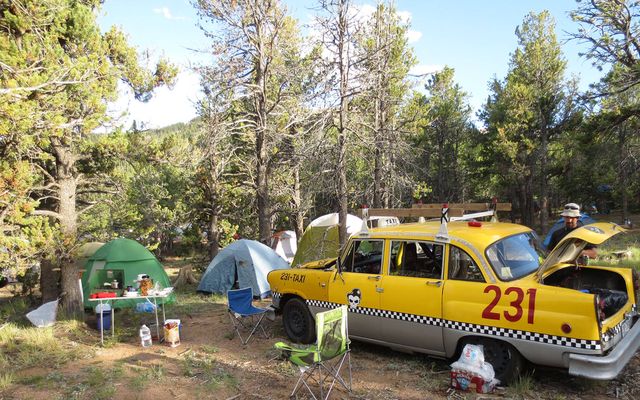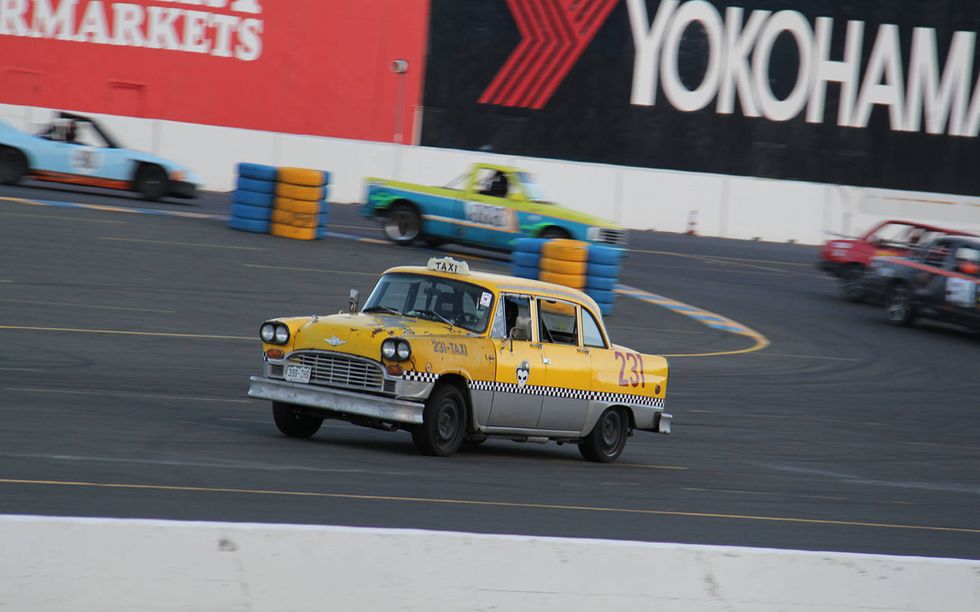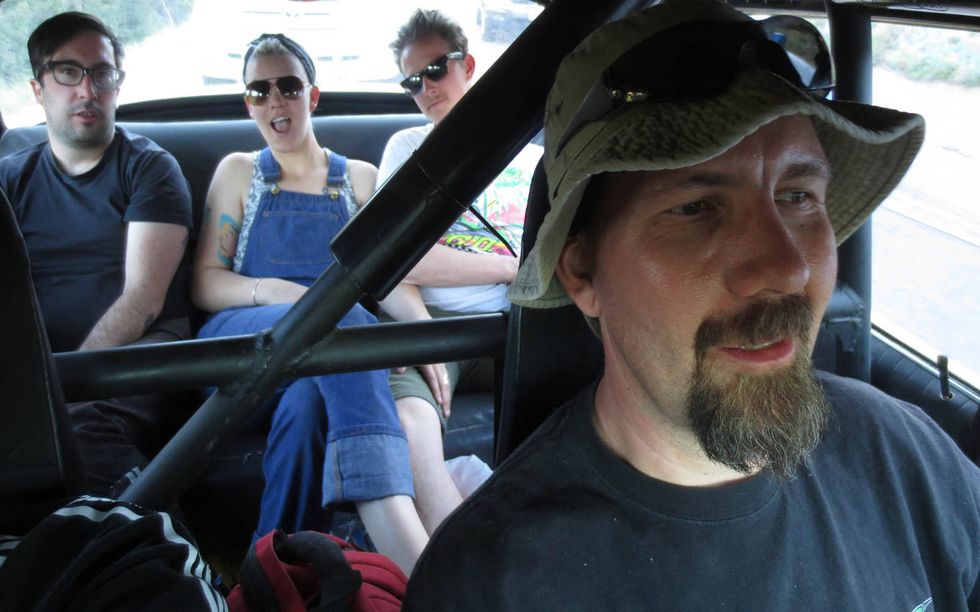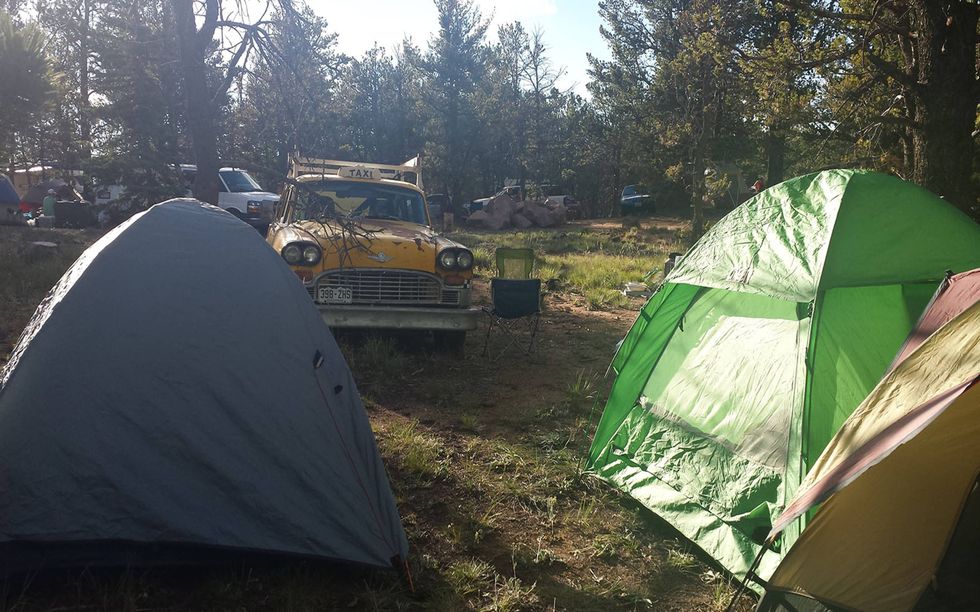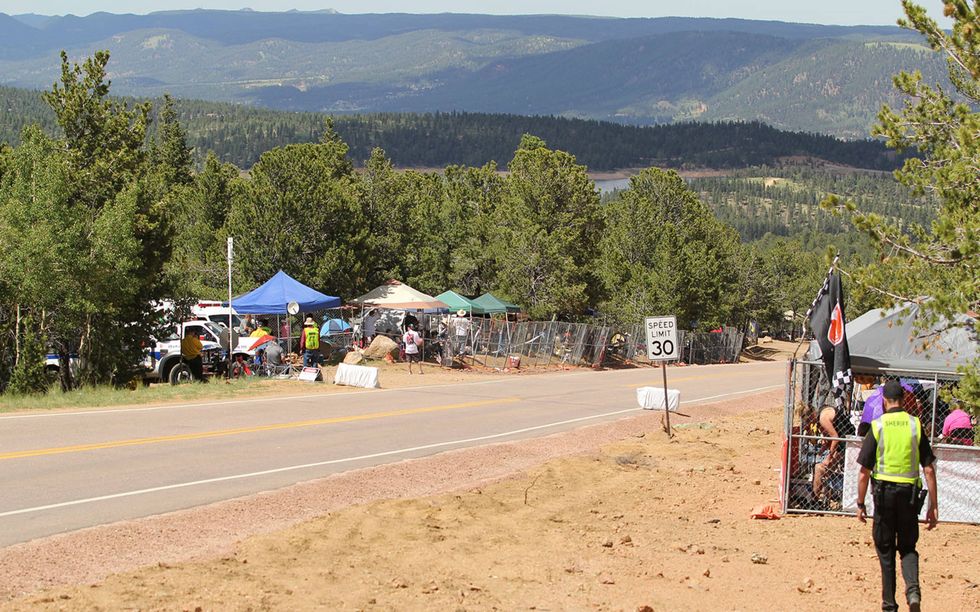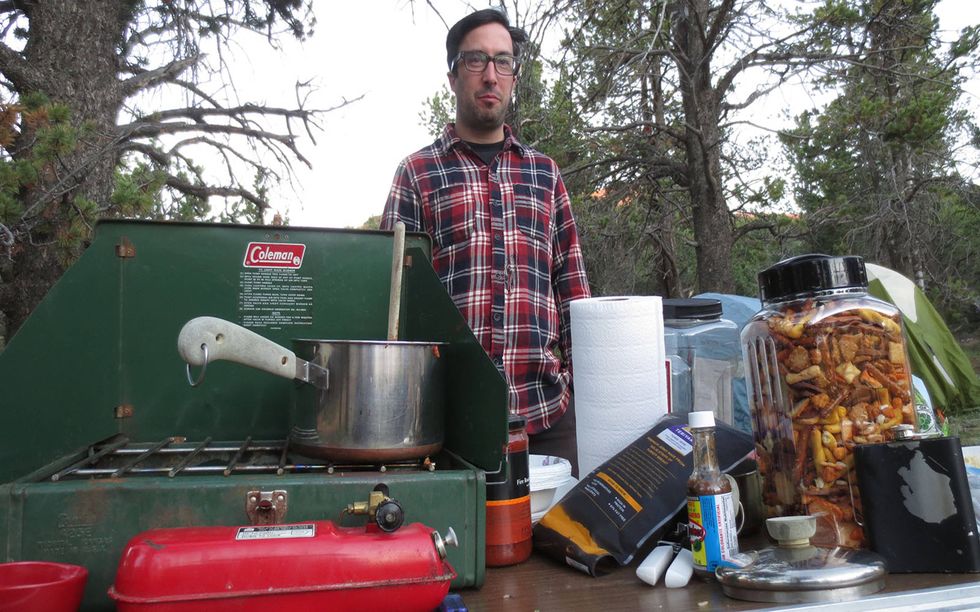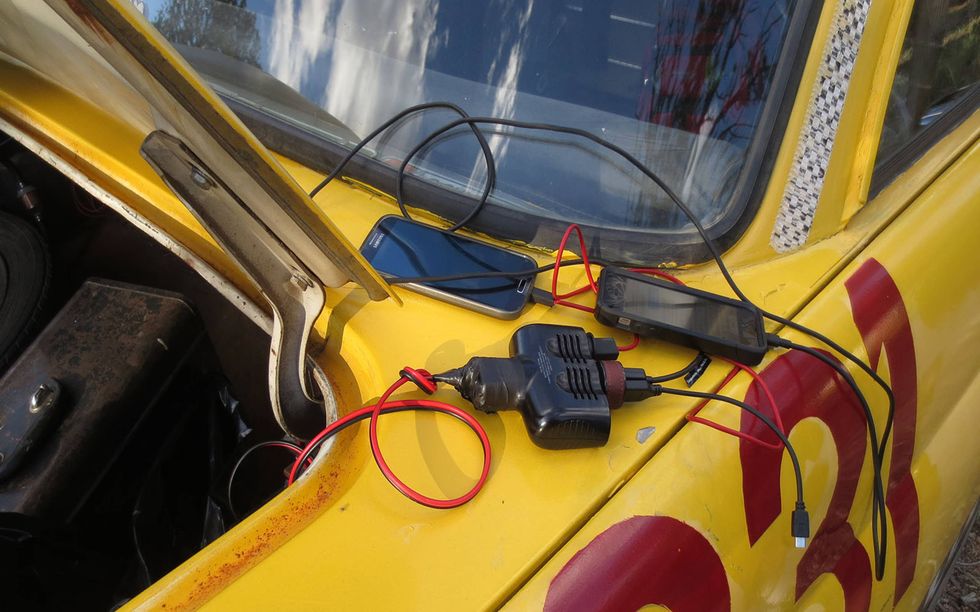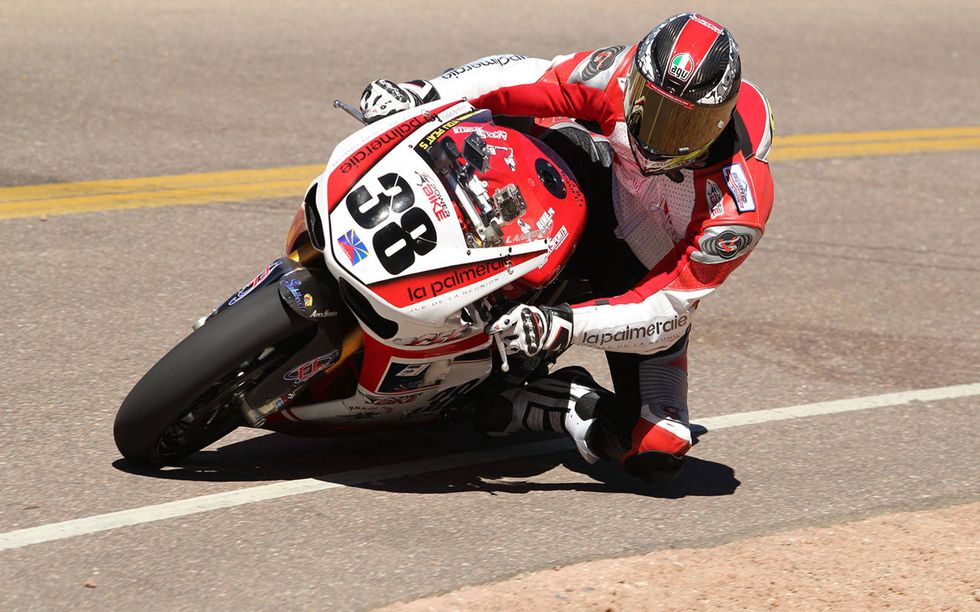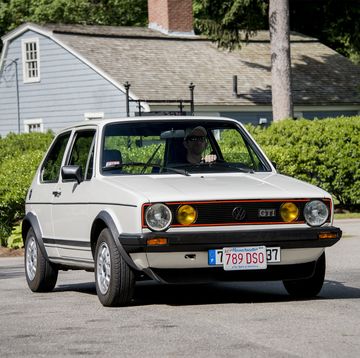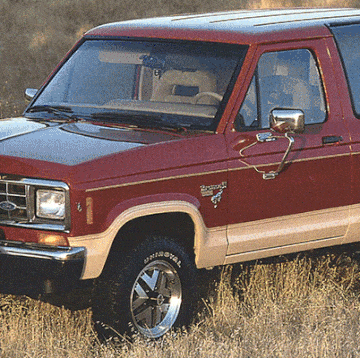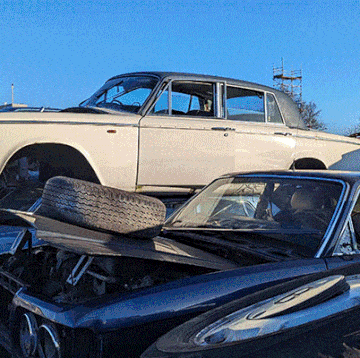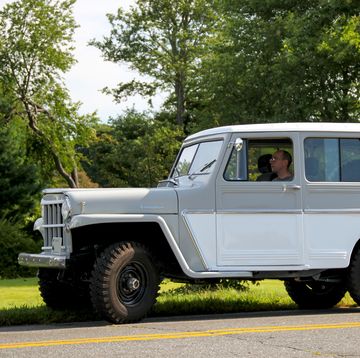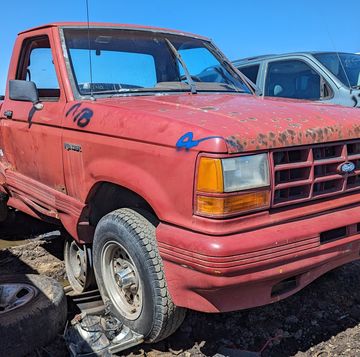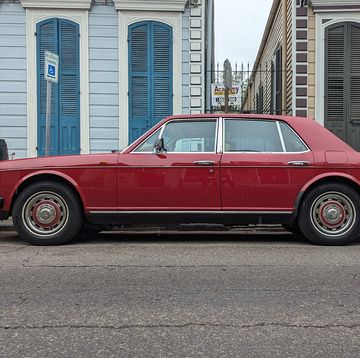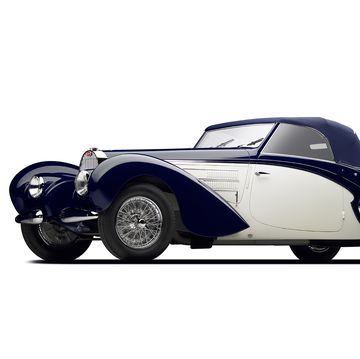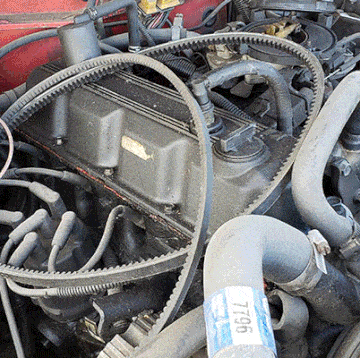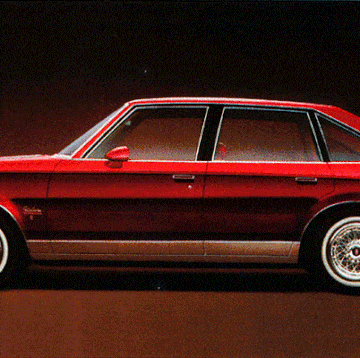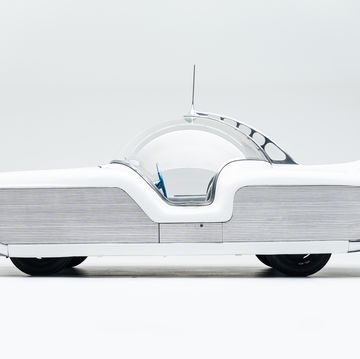When I headed to the mountain to cover the Pikes Peak International Hill Climb a few weeks ago, I wasn't going to cover the story from a plush hotel room in Colorado Springs; as I learned at Speed Week at the Bonneville Salt Flats last year, you really need to show up in weird vehicles and sleep in tents to get the genuine Mountain Time Zone motorsports experience.
For Pikes Peak, I rode with four fellow race fans to the Halfway Picnic Ground campsite in a 1978 Checker Marathon with full roll cage, 383-cubic-inch Chevrolet small-block engine, and four-speed manual transmission. Here's what that experience was like.
The Rocket Surgery Racing Checker Marathon was built to compete in the 24 Hours of LeMons low-budget endurance-racing series (where I work as a race official and review the occasional street car from a race organizer's perspective). Rocket Surgery Racing team captain Rich von Sneidern picked up his '78 Marathon for cheap in Denver (in its previous life, it had been a taxi in Pueblo, Colorado), then found a couple of rusty parts Checkers for below scrap value.
After making one semi-good Checker out of three bad ones and giving it Chevy small-block power and a manual transmission, Rich installed a full rollcage and the other safety gear needed to compete in LeMons racing. The Checker isn't particularly fast on the race track, but it's quite reliable and easy to fix when something does break. In its year of LeMons racing, it has been part of a nightmarish trek to a race in California and has won the coveted Index of Effluency award. Clearly, this was the car to bring up the mountain for the hill climb.
The great thing about the Checker Marathon is that its interior is an enormous, living-room-like box, and so you can install a full rollcage in one and still keep the rear seat. The front bench seat had to go in order to install race-legal one-piece front seats (and make room for the floor shifter), but we still managed to fit five of us plus a vast quantity of camping gear and supplies. Up the mountain we go!
When driving through the pits on the day before the race, down near the starting line, we got a standing ovation from some of the race crews as we passed by. After hauling our camping gear out of the Marathon's cavernous trunk and setting up our campsite, race fans at nearby campsites kept coming by to admire the spectacle of a Checker race car. Everybody loves these cars!
The Checker ended up parked in the midst of a large, fenced-in population of race spectators.
The Checker's 383-cubic-inch Chevrolet V8 (400 crankshaft in a 350 block) was tuned for the thick-as-soup air in 5,280-feet-elevation Denver, not the thin stuff at 12,000 feet, and so it ran pretty rich during the last bit of the climb to the campsite. The red-tailed hawks, meanwhile, didn't seem to mind the altitude.
The highlight of the race itself, once I got situated with my camera a little ways up the hill from Halfway Picnic Ground, was the record-breaking run by Greg Tracy in the Mitsubishi i-MiEV Evolution III. Best of all, the GoPro on the car captured me shooting my photos.
